The 10 best winning streaks in men's tennis history
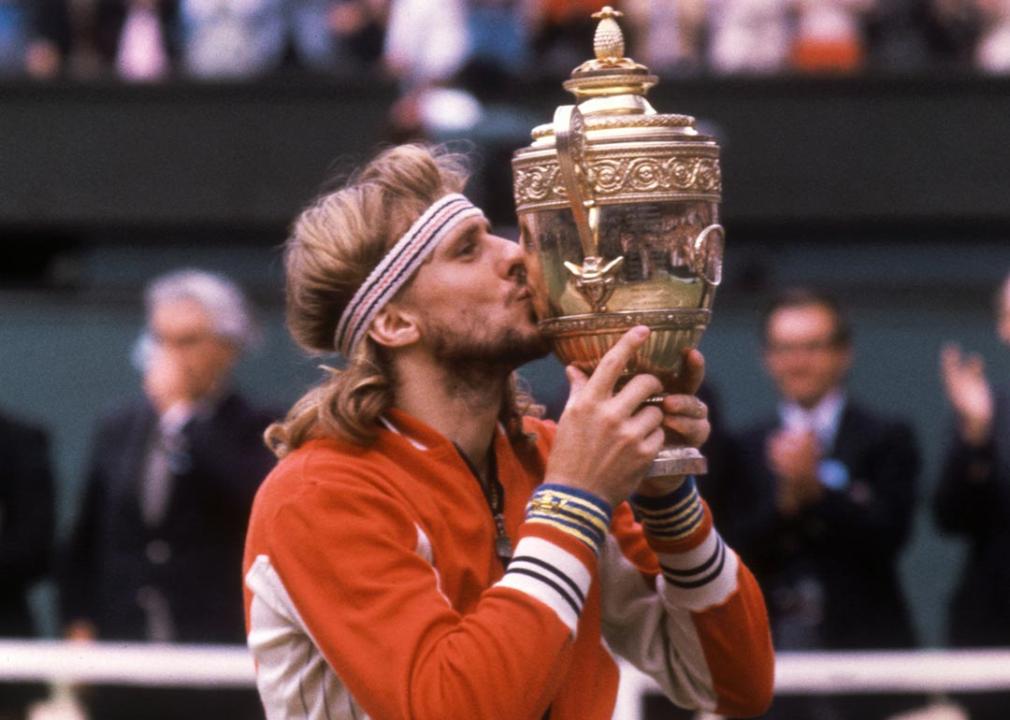
AFP // AFP via Getty Images
The 10 best winning streaks in men’s tennis history
Bjorn Borg kissing the trophy after winning his fifth Wimbledon title in July, 1980.
Athletes have been playing tennis in some form since the Middle Ages, but it wasn’t until 1968, when both amateurs and professionals could compete against each other, that the sport became the popular spectacle it is today. Anchored by four Grand Slam tournaments—the Australian Open, French Open, Wimbledon, and the U.S. Open—the season runs nearly all year. That makes for a lot of opportunities for thrilling stories, heated rivalries, and monthslong winning streaks.
OLBG compiled a ranking of the ten most impressive winning streaks in men’s tennis history using data from Ultimate Tennis Statistics. Streaks were ranked according to their length. Winning streaks with no Grand Slam championships in their duration were not considered.
![]()
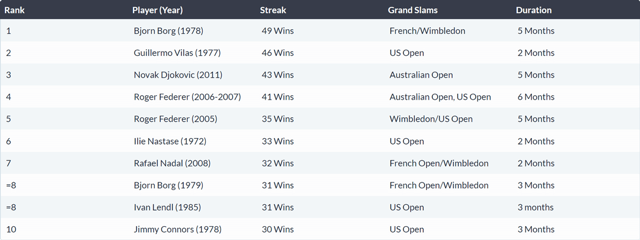
OLBG
Game, set, match for these seasoned tennis stars
Table showing ranks of players and year, streak, grand slams and duration.
Some of these seasons are considered the best in tennis history, while others are tarnished by controversial matches. Unlike large team sports, tennis is one-on-one, or two-on-two at most, so athletes tend to gain the spotlight. It also features a game clock, meaning matches can and have lasted more than 11 hours.
“Tennis is a mental game. Everyone is fit, everyone hits great forehands and backhands,” Novak Djokovic famously said, and nothing can mess with the mind more than the pressure of winning a title or breaking a record. That’s why these men are stars—they live for the moment and rise to the challenge.
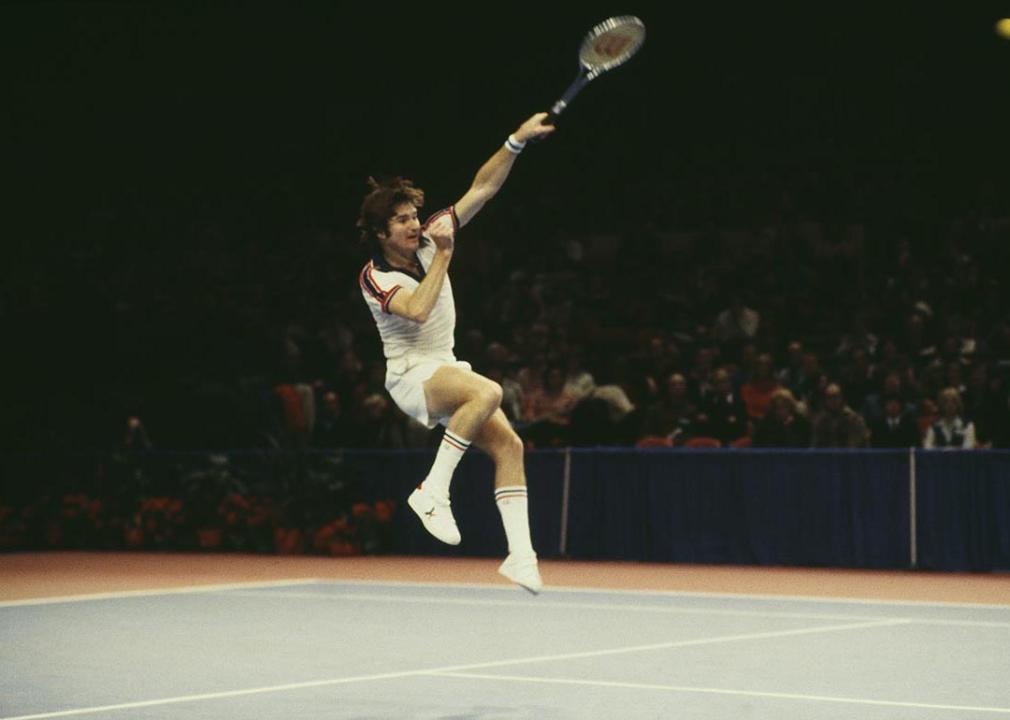
UPI // Bettmann Archive // Getty Images
#10. Jimmy Connors (1978)
American tennis player Jimmy Connors competing in an indoor tennis tournament in 1978.
- Winning streak length: 30 wins
- Grand Slam championships won: U.S. Open
- Time duration: Three months
Starting off the charts from tenth to first place is American tennis legend Jimmy Connors. Wiith a 30-game winning streak crafted from July to October 1978, his first win of the run was in the American capital of Washington D.C. Connors eventually went on to win that tournament and four more during that three-month spell of dominance, which would also include victory in the Men’s U.S. Open of 1978.
Connors got the better of Björn Borg in that year’s final, but he was unable to end the rest of 1978 unbeaten. Although Halloween often offers Americans reasons to celebrate, there would be no celebration that year by the time Brian Teacher had beaten Connors on the carpet surface in Tokyo.
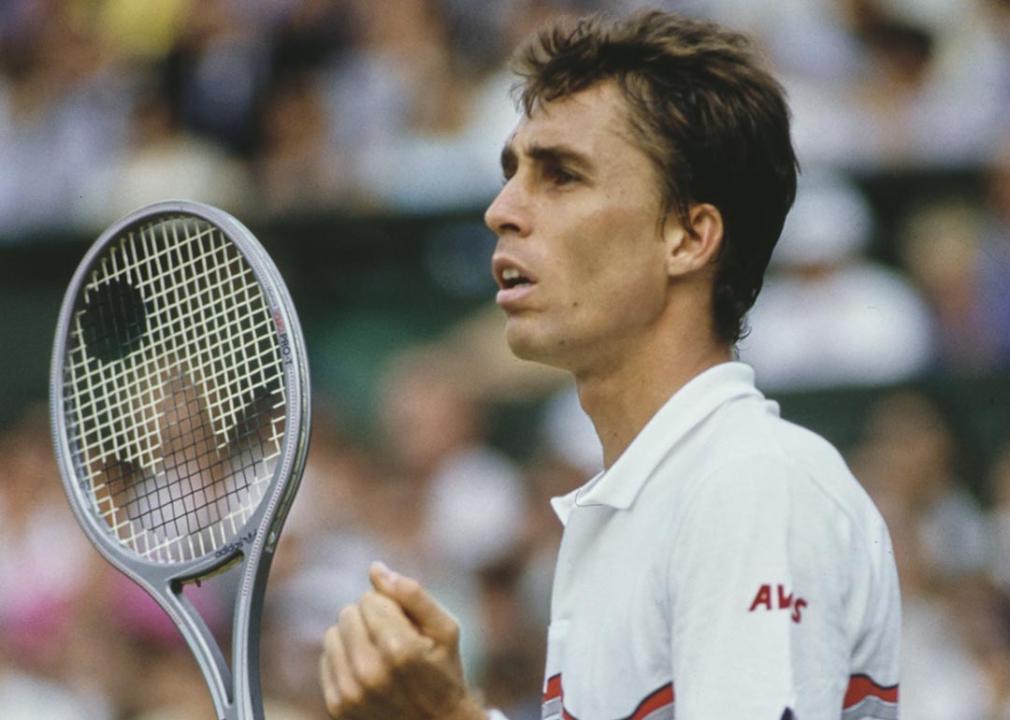
Hulton Archive // Getty Images
#8=. Ivan Lendl (1985)
Czech-American professional tennis player Ivan Lendl at a Wimbledon tournament in the ’80s.
- Winning streak length: 31 wins
- Grand Slam championships won: U.S. Open
- Time duration: Three months
Next up is one of two tennis players who picked up 31 consecutive wins in a row: Ivan Lendl. The naturalized Czechoslovakian found an affinity with his eventual new homeland and it arguably began back in 1985 when the former coach of Andy Murray won that year’s U.S. Open.
The 31-match winning streak got underway with a first-round win over Jay Lapidus. From there, Yannick Noah and Jimmy Connors would soon be picked off in the quarterfinals and semifinals, respectively, before Lendl beat John McEnroe in straight sets.
Lapidus was win number 1 and win number 31 was against John Lloyd in the quarterfinal of the Australian Open three months later. That win would set up a semifinal clash with Stefan Edberg. Edberg won the match on his way to the final — a win that was responsible for stopping Lendl’s winning run being extended to 32.
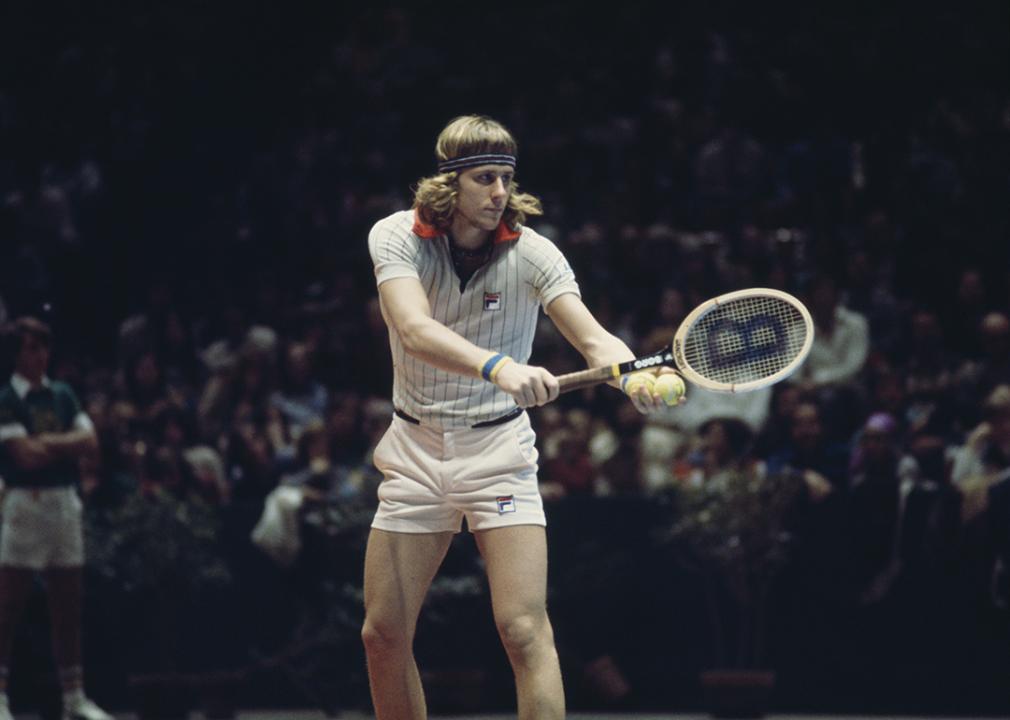
UPI // Bettmann Archive // Getty Images
#8=. Björn Borg (1979)
Swedish tennis player Björn Borg in action during a match at Wimbledon in the ’80s.
- Winning streak length: 31 wins
- Grand Slam championships won: French Open, Wimbledon
- Time duration: Three months
The other player to collect 31 successive wins was Björn Borg in 1979. That unbeaten run would play a part in the Swedish star collecting both the French Open and Wimbledon titles that year. A victory over Roland Garros started the streak, and after a first-round win over Tomas Smid, the path to the final would eventually see Borg overcome Victor Pecci in the main event.
Just a month later, Borg was also winning on grass surfaces and beat fifth-seed Roscoe Tanner in the 1979 Wimbledon final. It was a quickfire Grand Slam double for the famous Swede. The run would finally come to an end in that year’s U.S. Open and there is nothing like a bit of revenge to keep the sport interesting. Who would be the man who would get the better of Borg? Of course, it was Roscoe Tanner in the quarterfinal.
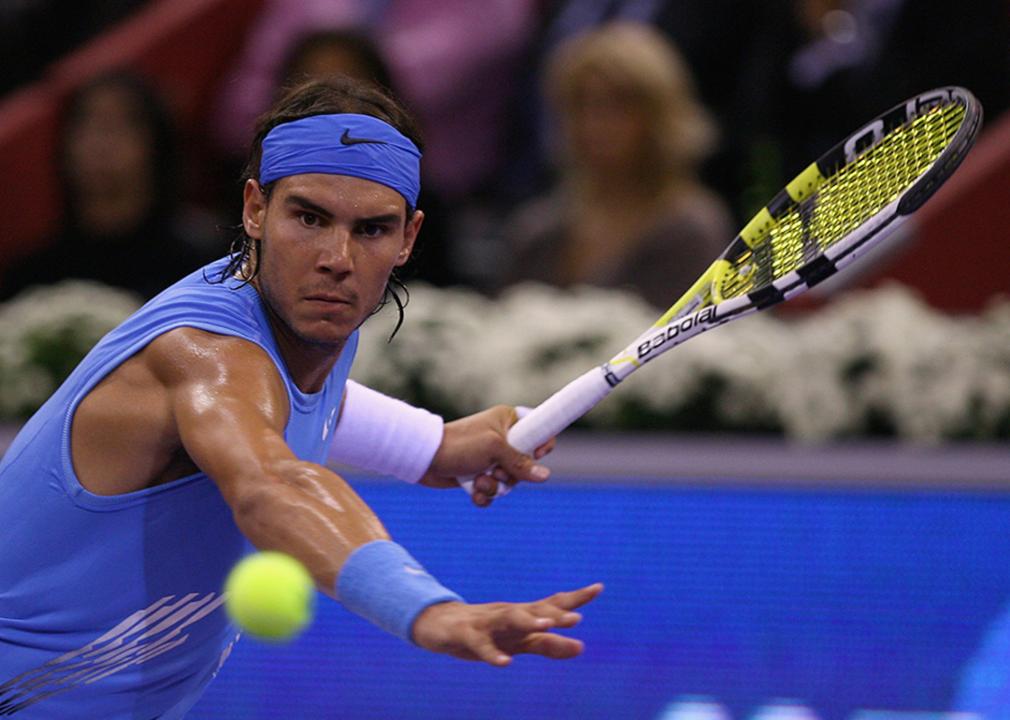
Clive Brunskill // Getty Images
#7. Rafael Nadal (2008)
Spanish tennis player Rafael Nadal in action during a match at the Madrid Masters tournament in 2008.
- Winning streak length: 32 wins
- Grand Slam championships won: French Open, Wimbledon
- Time duration: Two months
In seventh place is an active star who may not be active for much longer. Although injuries look like they will finally get the better of Rafael Nadal at the end of the 2024, there is no doubt that the Spaniard has had an incredibly illustrious tennis career.
A litany of Grand Slam titles that include the two that he picked up in the summer of 2008, and that year’s French Open and Wimbledon titles, were also part of a 32-match winning streak. The streak got underway in a warm-up tournament for the French Open, and with the eventual victory being collected at the Hamburg Masters, it would bode well for what was soon to unfold at Roland Garros.
Of course, 2008 was the year when one of the greatest Wimbledon finals ever took place. With Roger Federer acting as the other protagonist in the battle, the Swiss legend would find himself on the losing side in SW19. It was a rare defeat for Federer. But Nadal’s 32-match winning streak finally came to an end when Novak Djokovic had his number in a warm-up clash for the U.S. Open at that year’s Cincinnati Masters.
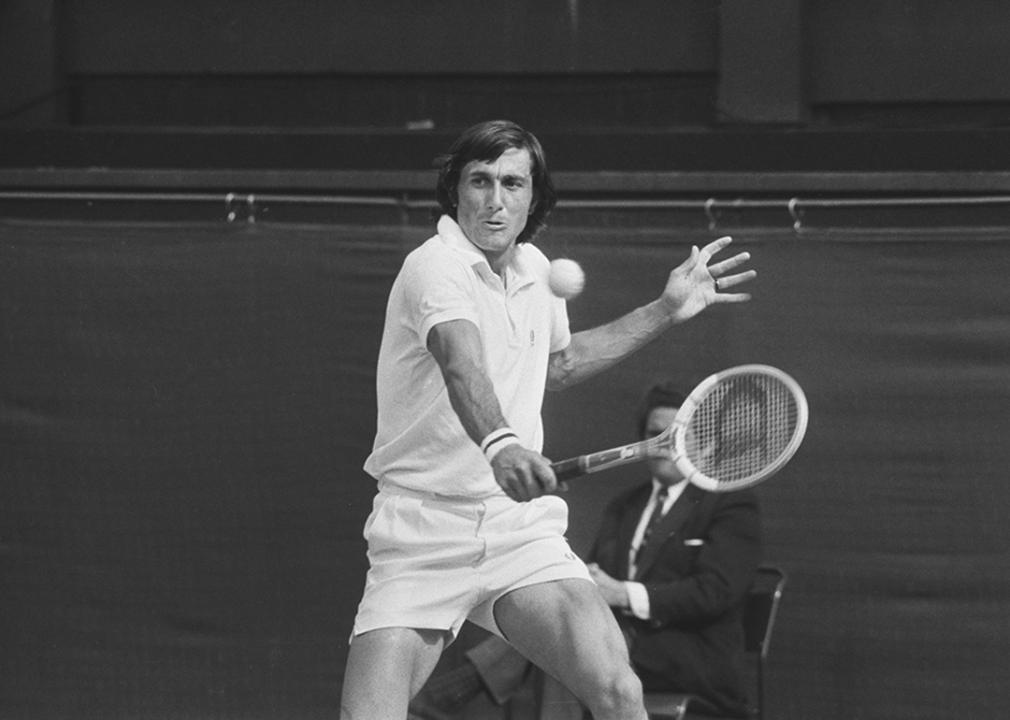
Evening Standard // Hulton Archive // Getty Images
#6. Ilie Nӑstase (1972)
Romanian tennis player Ilie Nastase during the 1972 Wimbledon Championships in London, UK in July of 1972.
- Winning streak length: 33 wins
- Grand Slam championships won: U.S. Open
- Time duration: Two months
In the sixth spot is one of the biggest names of the sport in the 1970’s and that name is none other than Ilie Nӑstase. The Romanian’s talents went far beyond the Iron Curtain and those talents would also see him go on a 33-match winning streak.
The streak took place in 1972 and meant Nӑstase would be the king at that year’s U.S. Open. After getting the better of Arthur Ashe, Romania’s finest that won tennis’ Cold War at Forest Hills in Queens, New York.
However, that was not where the winning streak got underway. In July 1972, Nӑstase would find himself in Davis Cup action as Romania eventually advanced all the way to the final against the United States.
Eventually Romania would play second best in the final and Nӑstase would taste defeat in the same year that he won the U.S. Open. His 32 victories in a row could not become 33, as Roscoe Tanner once again played the role of spoiler after winning in Los Angeles.
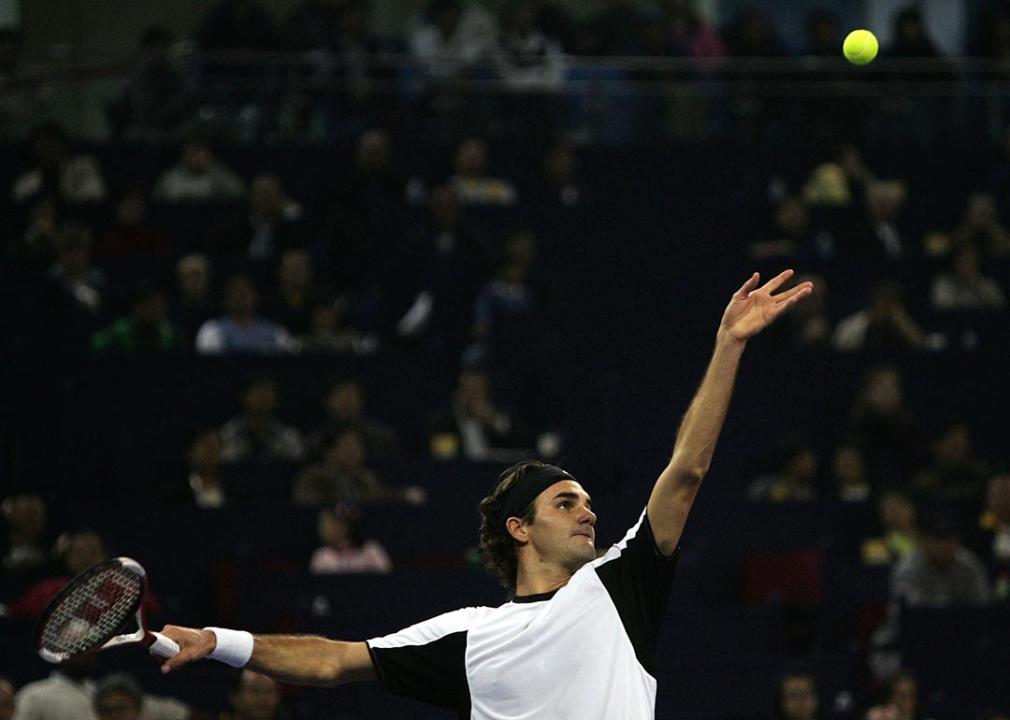
China Photos // Getty Images
#5. Roger Federer (2005)
Swiss tennis player Roger Federer in acting during the final match of the ATP Masters Cup held in China in 2005.
- Winning streak length: 35 wins
- Grand Slam championships won: Wimbledon, U.S. Open
- Time duration: Five months
At the beginning of 2005, Roger Federer hired Tony Roche—a former player—to coach him part-time, and the move was a good one. Seven years into his professional career, the Swiss star was dominating. In addition to achieving a five-month winning streak, Federer also won at Wimbledon (his third in a row at the time) and the U.S. Open.
His winning streak ended with a loss to David Nalbandian in the Masters Cup and would be one of only four total losses that year. Federer ended the season 81-4 (95.29%), which was the second-highest single-season win percentage in the Open Era behind John McEnroe’s 82-3 season in 1984. Those stunning numbers also helped Federer secure the #4 spot in career win percentage.
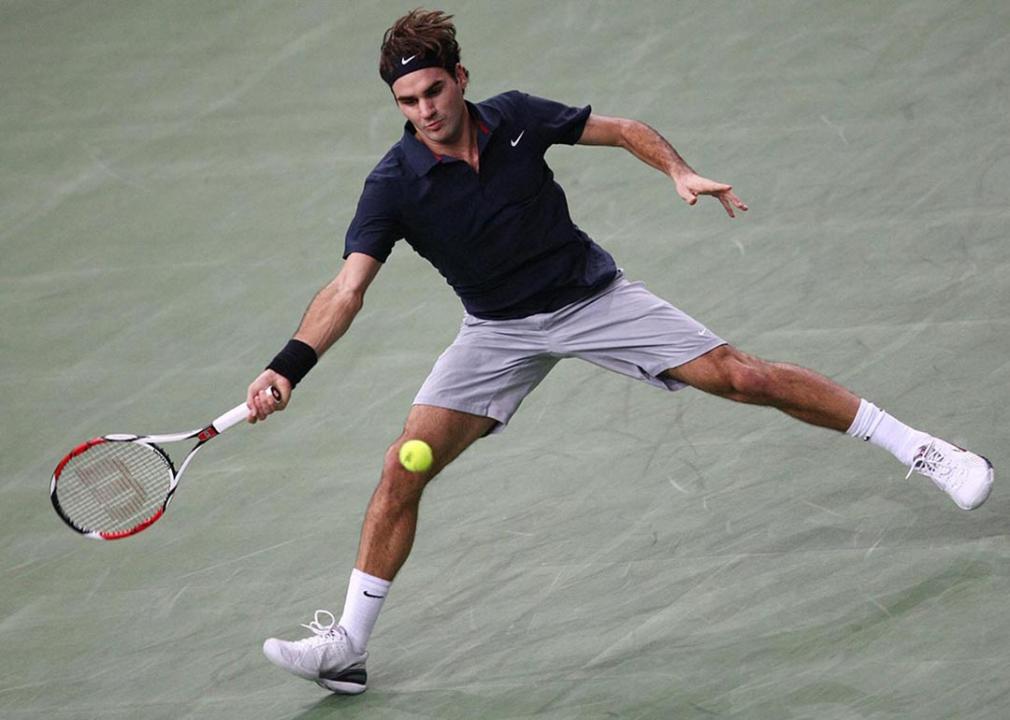
FRANCK FIFE // AFP via Getty Images
#4. Roger Federer (2006-2007)
Roger Federer of Switzerland in acting during a 2007 ATP Masters Series match.
- Winning streak length: 41 wins
- Grand Slam championships won: Australian Open, U.S. Open
- Time duration: Six months
No, that’s not a typo: Roger Federer is on the list twice after somehow one-upping himself after his impeccable 2005 season. He went on a 41-match winning streak from the end of 2006 through the beginning of 2007. In the process, he won the U.S. Open and the Australian Open, but 2006 also came with its frustrations.
Federer and Rafael Nadal are storied rivals, and during that season the Swiss powerhouse went 2-4 against the Spanish superstar. One of those losses was the underrated 2006 Rome Masters final, which helped lead to what some consider the greatest match ever played: Federer vs. Nadal in the 2008 Wimbledon finals.
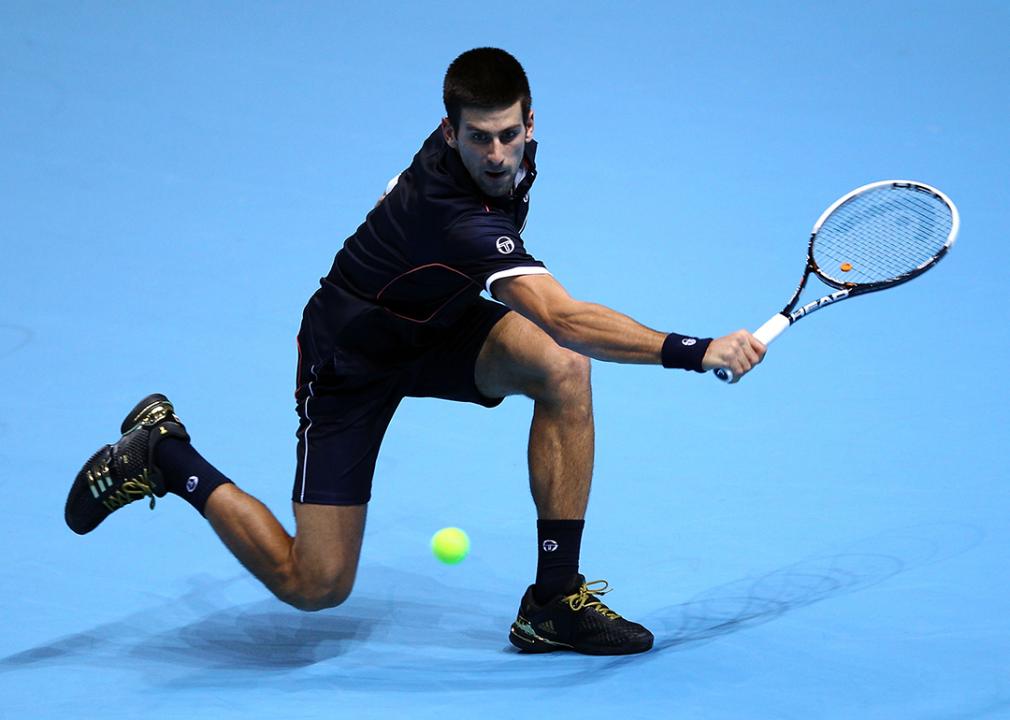
Julian Finney // Getty Images
#3. Novak Djokovic (2011)
Serbian tennis player Novak Djokovic during the men’s singles match for ATP World Tour Finals in 2011.
- Winning streak length: 43 wins
- Grand Slam championship won: Australian Open
- Time duration: Five months
Novak Djokovic is the only active player on this list, and during the two decades he’s been a pro, the Serbian has made quite the name for himself. In 2023, he broke the men’s record for most Grand Slam titles with 23 after his win at the French Open; however, 2011 was his most dominant season. It started with a 43-match win streak, which prompted tennis icon John McEnroe to declare the 24-year-old was “having the greatest year in the history of our sport.“
Djokovic’s streak ended with a loss to Roger Federer in the French Open semifinal, and his success waned during the latter part of the year after suffering a back injury that caused him to withdraw from the Davis Cup. Even with a lackluster end to the season, Djokovic’s 2011 showing is considered one of the most impressive seasons in tennis history.
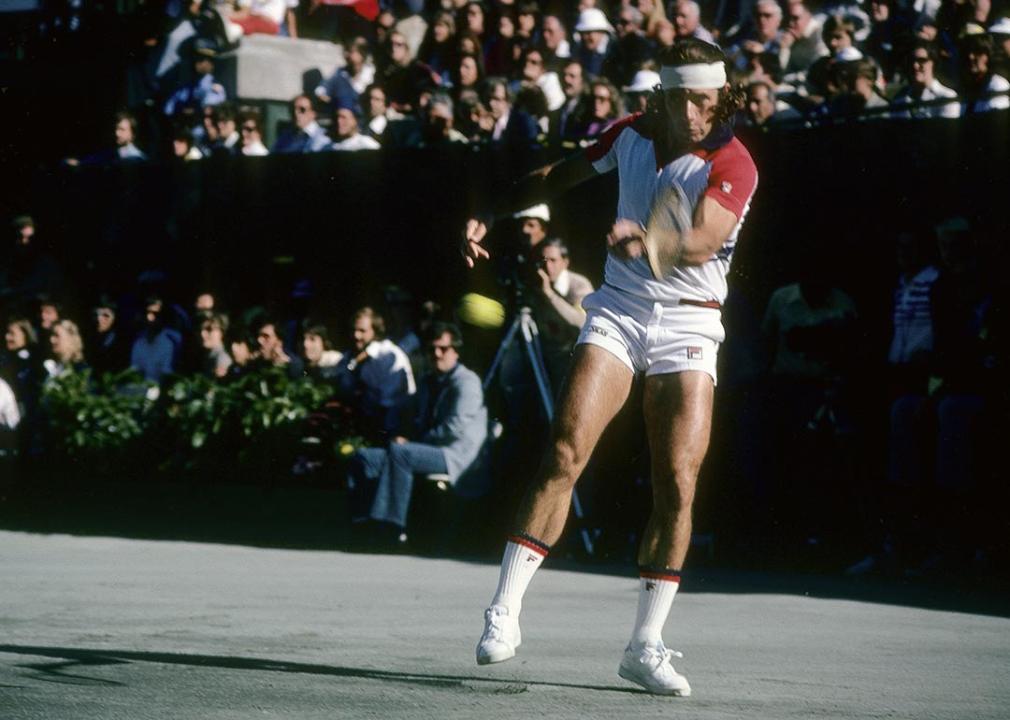
Focus On Sport // Getty Images
#2. Guillermo Vilas (1977)
Tennis player Guillermo Vilas of Argentina plays during the 1977 U.S. Open tournament in New York.
- Winning streak length: 46 wins
- Grand Slam championship won: U.S. Open
- Time duration: Two months
On Jan. 9, 1977, Guillermo Vilas lost the Australian Open. Fed up, the Argentine player changed all aspects of his game, from his trainer to his serve and strategy. Vilas won the French Open just a few months later, marking not only his first Grand Slam title but also the first won by a South American player. After his historic win, the 25-year-old was unstoppable. His 46-match win streak began in July and included a U.S. Open win against the #1 player in the world, Jimmy Connors.
That streak came to an end after a controversial loss to Ilie Năstase, who used a spaghetti-strung racket. The type of racket was banned the following year, and Vilas was vocal about the loss, saying, “I didn’t lose against a player, I lost against a racket.” He went on to win nearly 30 more consecutive matches after that, and if the outcome against Năstase had been different, Vilas would hold the winning streak record without anyone else coming close.
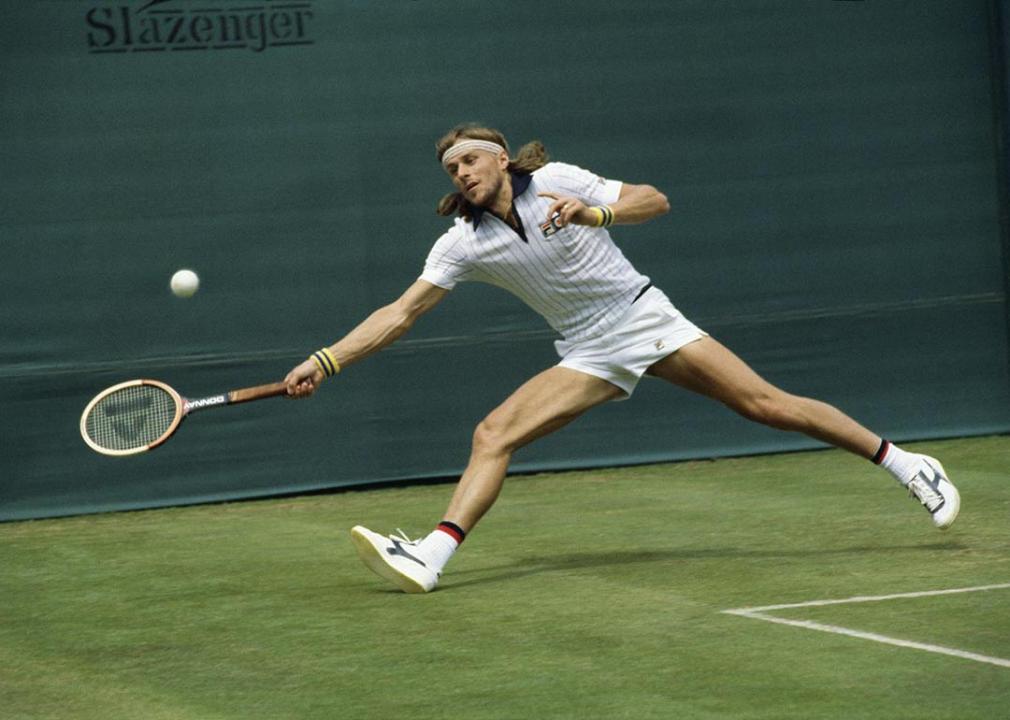
Giuliano Bevilacqua // Sygma via Getty Images
#1. Björn Borg (1978)
Bjorn Borg in action during the men’s singles Wimbledon Championship in 1978.
- Winning streak length: 49 wins
- Grand Slam championship won: French Open, Wimbledon
- Time duration: Five months
Guillermo Vilas’ winning streak was record-breaking at the time, but the very next year Björn Borg dethroned him. The Swedish star won 49 matches in a row, including French Open and Wimbledon titles (he never even dropped a set during the French Open). Borg’s historic winning streak came to an end at the U.S. Open, where he lost in the finals to Jimmy Connors.
During his short yet dominant career, Borg won 11 Grand Slam titles, including five consecutive championships at Wimbledon; however, he was never able to secure a U.S. Open win despite making it to the finals four times. In 1983, he unexpectedly retired at the age of 26 before making a brief comeback from 1991 to 1993.
This story was produced by OLBG and reviewed and distributed by Stacker Media.




